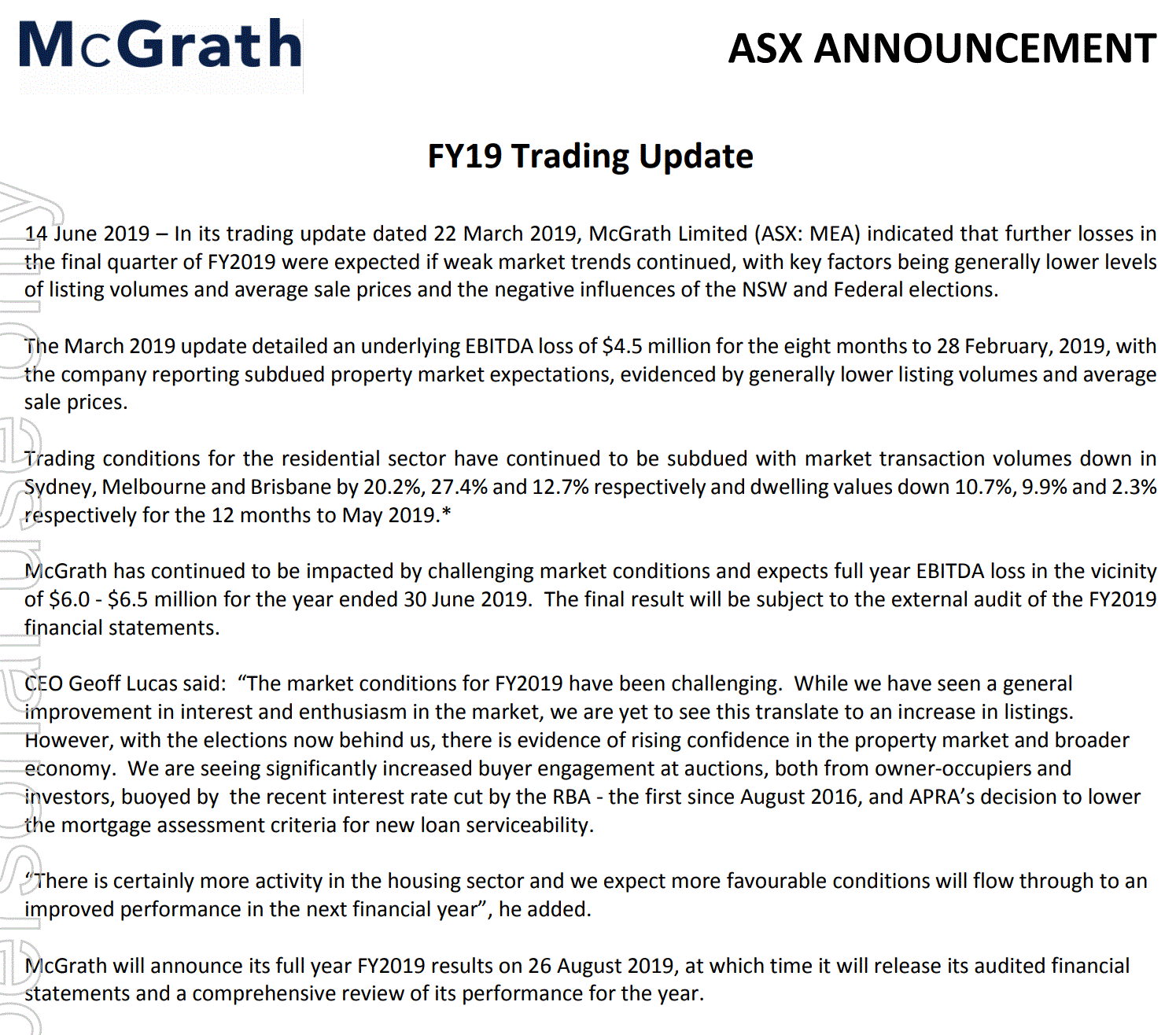McGrathmaggedon not sounding too hot on housing bounce either:
But McGrathmageddon himself was so bullish only two months ago:
Firstly, I pointed out that in Sydney (and Melbourne), the 5–10% drop we’ve seen so far followed a growth cycle that added 60–100% to property values overall. Many Australians owned property for the entire duration of this cycle and therefore have enjoyed the full benefit.
I suggested he consider shifting his view. In reality, his particular property had gone up by 70% and that included the recent 10% correction in his area.
Next, I addressed the sensational and erroneous theory being bandied about by some purported experts that there is another 40% drop in values to go.
There is zero chance we will see a collapse like this. There would have to be a global economic ice age to generate this sort of slump and then it wouldn’t matter where your cash was tied up, we’d all be in trouble!
The fundamentals underpinning property values in Australia remain solid. Rock solid. What we are seeing now is an important part of every major asset cycle – a correction in values after a sustained period of growth.
Remember, it was only Sydney and Melbourne that had significant growth (over 50%) in recent years. The rest of Australia has had pretty subdued price increases post-GFC.
I’ve heard the “40% overvalued” theory four times in my 35 years in property. It’s like the same groups are chasing the same headline impact every time the market corrects. Not once has this provocative prediction come true – or even close to it. It won’t this time, either.
So, what’s next?
Sydney and Melbourne prices might correct by another 5% to a maximum of around 10%. In 2019, I see the strong possibility of a mini rebound as buyer demand grows at adjusted pricing levels.
It’s impossible to pick the top or bottom until they are behind us but my instincts tell me the market has corrected quickly and we are within a few percentage points of new price benchmarks.
Only three things could change this. A spike in interest rates over the next 24 months, which would return us to the long-term average of around 7%. Banks tightening lending even further. Unemployment escalating rapidly. None of these are likely to happen.
I believe the worst of this correction is already over and we’re in for a much softer landing than many pundits predicted.
Meanwhile, it couldn’t be a better time for first home buyers. With the bank of mum and dad by their side, along with generous stamp duty concessions and government savings initiatives, there are excellent opportunities to get a foot in the door after a long period of difficulty.
Within the broader market, I believe there is still solid demand across most price points but lending restrictions are ruling many buyers out. In the long run, it’s strengthening our broader financial system but the market needs time to adjust.
In this edition of the McGrath Report, we once again review some of the social trends impacting Australian real estate.
As our major cities become more crowded, congested and expensive, will more people trade off size for location? Will people sacrifice a bedroom or garden to live closer to the CBD?
As Uber Eats feeds more Australians, will kitchens become less important or even vanish in some instances?
Will young families and empty nesters pull the rip cord on city life and escape to our vibrant, re-emerging regional centres that are readily available within a 90 minute radius of the capitals?
Also in this year’s report, we address what’s next for our East Coast markets as Sydney and Melbourne fade to the background.
Will Brisbane and South East Queensland finally get their time in the sun? The Sunshine State is once again Australia’s favourite destination for internal migration and most importantly, the economy is turning a corner. Prospects for investment up north are as good as I’ve seen them.
Finally, a note on Sydney. You might think this great city has reached its limits, with affordability far too strained and little room for further capital growth in the medium term. I disagree.
We are on the cusp of what will go down in history as the great renaissance of Western Sydney.
Massive new infrastructure, billions in new investment and tens of thousands of new jobs are about to emerge in Sydney’s most affordable region, where prices have the most room to grow.
We hope this year’s report provides fresh insights and ideas for your benefit into the future.
Never trust a real estate agent.


